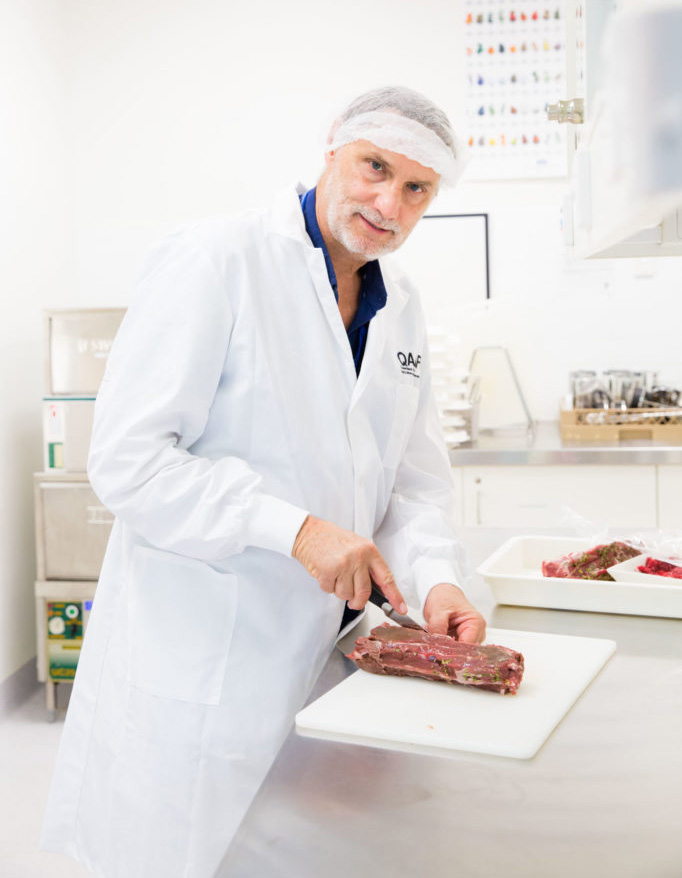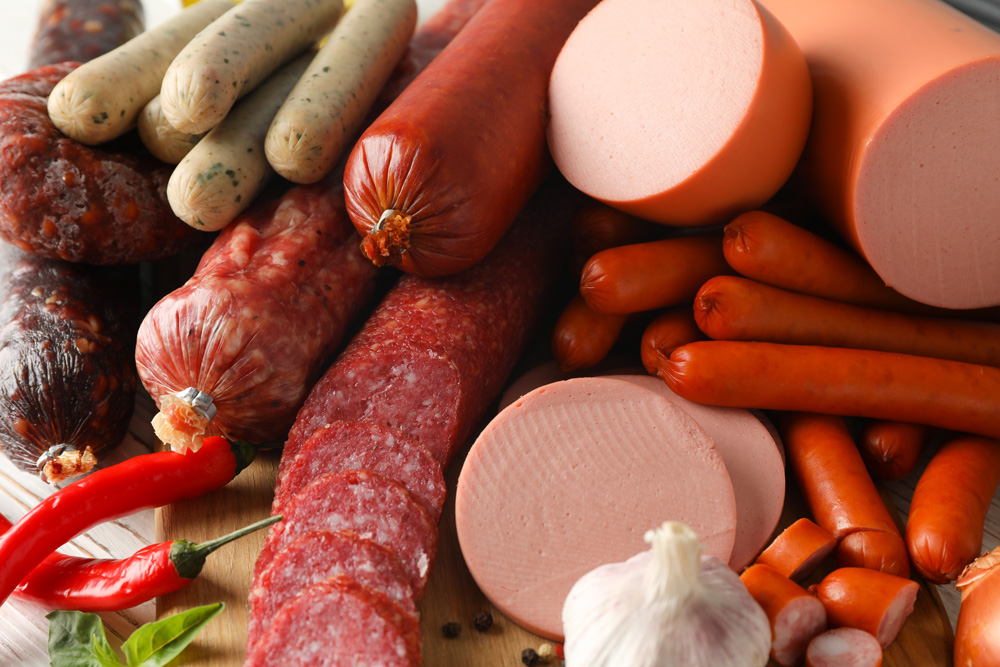The analytical power of machine learning models under development at QAAFI is helping to validate the species, provenance and cut of meat.
Are the meat products you paid top dollar for actually what they are advertised to be?
How can you tell? And what about processed, convenience meats such as sausages and patties?

Despite the inclusion of analytical testing within meat production systems, meat fraud still happens; the horsemeat infiltration of the European beef supply chain in 2013 is an example.
In fact, a 20-year analysis, which examined more than 400 incidences of beef fraud, found that counterfeiting meat species or cuts is the most common type of meat fraud.
This kind of counterfeiting – with its food safety and consumer swindling implications – is being tackled at the Queensland Alliance for Agricultural and Food Innovation (QAAFI) by Professors Louwrens Hoffman and Daniel Cozzolino.
“With population growth increasing demand for food, there is considerable economic gain in adulterating food; swapping premium products for inferior products or species,” Professor Hoffman says. “High value products, such as meat, are especially susceptible to food fraud.”
As Chair of Meat Science, Professor Hoffman is concerned by limitations in the testing technology currently used within meat production systems to detect fraud or accidental substitution.
Consequently, he has been examining newer technology for its potential to overcome current limitations and says a step-change in testing capability is possible: “The cut, the species and even the provenance of meat – down to the region of origin and feedlot – can be rapidly determined using imaging technology that is easy and non-destructive to use,” he says.

Light probe
Professor Hoffman says the needs of industry can be best met by using light-based (spectroscopic) technology to provide data about a meat sample. The analysis of this data is done with advanced machine learning algorithms that QAAFI is helping to develop.
He explains that light is especially useful for analytical purposes because of a quirk of physics. Atoms (or more specifically, electrons in atoms) can absorb and emit light. As a result, every atom, molecule and compound in the universe produces a unique ‘spectrum’ of reflected light. This acts as a signature that can be used to forensically identify any compound.
Professor Hoffman is recommending the use of commercially available devices that emit light in the near-infrared (NIR) range.
Handheld NIRs project light onto a meat sample and collect the reflected light – the ‘signature’.
The caveat with this approach is that the spectral signatures that can identity meat cuts, species and provenance have to be decoded beforehand. This is where additional R&D is needed.
Machine learning
Meat, of course, is a biochemically complex compound. By necessity, the imaging-based identifiers of meat traits are equally complex and surpass the ability of human senses to detect.
In the past, the problem would have hit an impasse because of this. Instead, Professor Hoffman turned to machine learning algorithms to solve what amounts to an enormous, statistical, jigsaw puzzle.
“To develop the analytical software, we matched the spectral signatures of meat products of known species, cut, provenance or other variable of interest,” he says. “That data is used to train machine learning algorithms to detect what distinguishes the different samples from a complex set of spectral clues.”
This training process for machine learning can be expanded in the future as industry needs evolve. This could come to include, for example, insects as they start entering the food and feed supply chains, something that Professors Hoffman and Cozzolino also work on from a food-safety perspective.
Professor Hoffman has also been involved in field testing the handheld NIR technology, including in South Africa where it proved highly effective.
“We could rapidly differentiate between South African game species, the muscle type and whether the meat was fresh or frozen,” Professor Hoffman says.
Accuracies for species differentiation ranged from 89.8 to 93.2 per cent and included ostrich, zebra and springbok game meat. Given that South Africa currently has no game meat quality standards or standardised meat cuts, this kind of technological advance opens up new opportunities to cheaply and effectively provide consumer protection.
Moving forward, Professor Hoffman points out the technology is only as good as the back-end analytical software. That is where he says industry should collaboratively focus its attention in terms of R&D investment to effectively stamp out meat fraud.
“Once the machine learning models are operational, the system is fast, cheap, reliable and accurate,” he says.
More information:
Industry need analysis: https://doi.org/10.3390/foods10020448
The South Africa study: https://www.mdpi.com/1420-3049/25/8/1845/htm
Contact: Professor Louw Hoffman, louwrens.hoffman@uq.edu.au, +61 417 984 547, Associate Professor Daniel Cozzolino, +61 7 336 52144, d.cozzolino@uq.edu.au
The Queensland Alliance for Agriculture and Food Innovation is a research institute at The University of Queensland, established with and supported by the Queensland Department of Primary Industries.
